From reality capture with drones to augmented reality, Bentley Systems is embracing the real world to excite the next generation of engineers and designers. By Greg Corke and Martyn Day
Bentley Systems chief executive officer Greg Bentley believes that, as an industry, we really need to start appealing to the next generation of designers, engineers and construction planners. For decades we have lost the best talent to areas like business studies and banking, which may have, until recently, appeared to be better career options.
But through exciting new interactive visualisation tools and slick new reality capture technologies, design and engineering has suddenly become highly visual, and enlivened.
Bentley is certainly doing its bit to capture the imagination of the ‘digital natives’. It is investing heavily in a whole number of new generation tools, from augmented reality to mobile technologies.
LumenRT, for example, which was recently acquired from e-on software, puts immersive games-like visualisation capabilities in the hands of engineers and architects.
Meanwhile, Bentley’s ContextCapture software can generate mm accurate 3D reality models from digital photographs.
The AEC industry used to be about line drawings, engineering calculations and theodolites, now you can immerse yourself in an interactive virtual reality of a proposed design or pilot a drone to capture as-built site conditions.
Bentley calls this Reality Modelling and at its annual Year in Infrastructure event in London last month showed the exciting role its technology played in planning the Pope’s visit to Philadelphia. Using photographs taken from a helicopter it helped ESM Productions create a reality model of 60 acres of downtown Philadelphia in just one day (read this article for more information).
Much of the London event was flavoured with big chunks of new capabilities in the concept side of the business. Bentley talked of ‘conceptioneering’ and how with MicroStation Connect, ContextCapture and LumenRT, it was possible to start the conceptual design and move this seamlessly throughout the Bentley software suite for continuous project delivery.
All too often, conceptual models have to be ditched, as they are incompatible with the documentation tools used for detailed design. Now it is possible to stay within a single common environment.
The first noticeable delivery of this is a product called OpenRoads ConceptStation which offers a highly interactive front end and allows designers to quickly evaluate and see design vs financial, environmental, and engineering performance. Bentley also showed that by combining AECOsim Energy Simulator and Generative Components inside AECOsim Building Designer, designers can get early stage energy performance feedback on a whole range of different design options.
The big, little product push was for customers to try the new Bentley Navigator Connect Edition (Windows or iPad), which has just been released. As an added incentive, each month there is a prize draw for a Microsoft Surface. Navigator Connect Edition offers collaborative model review for co-ordination, queries, drawings / docs and models and connects to ProjectWise.
Talking of ProjectWise, the Connect Edition is now in General Access, with AssetWise Connect Edition coming out next year, alongside many of the modelling applications. In passing Bentley stated that two thirds of its subscribing customers use the project collaboration software.
Data mobility has been identified by Bentley a number of times as a critical component in a BIM process and the company’s ‘i-model’ format is a flexible and extensible package for collating and sending a wide variety of intelligent data between project participants.
With so many standards in flux and so many countries chasing their own standards, Bentley explained how the i-model format combined with ProjectWise was an enabler for visual ‘widespread work packaging’ for controlled, tracked information exchange. We expect to hear more on this next year.
Driving BIM advancement
Greg Bentley’s keynote was filled with compliments for the UK and its commitment for not only sustaining its infrastructure but also pushing BIM advancement by requiring the industry to adopt cutting edge design, construction, tools and process. With BIM level 2 targets looking like they will be achieved, Bentley said the UK ad a national consensus on return on investment for infrastructure.
From many of the customer projects highlighted both this year and previously it is clear just how engaged Bentley Systems is with the major projects or infrastructure in the country.
London Underground, a long-time customer, the master plan for the Olympics, Crossrail, and Thames Water, are just some of the names. Now both Network Rail and Highways England are engaged in deploying Bentley’s asset management and tracking technology — and from what we hear HS2 is also being planned using Bentley’s tools.
While MicroStation has always been popular with London architects, Bentley’s popularity in government, or government-sponsored infrastructure projects, has been a major success for the company in both document and asset management.
Greg Bentley usually gives an update on the company’s financial growth, together with some insight into usage and trends but as the company is intending to go for an initial public offering (IPO), this was not on the cards.
He did say that the financial markets are not ideal at the moment for tech flotations and so the company has decided to wait for the market. This suggests an IPO is not imminent but could be some time next year.
Mr Bentley wanted to reassure the audience that nothing would change and Bentley Systems would still carry on delivering and spending substantial amounts on R&D, moving the MicroStation product stack onwards and upwards.
Naturally, MicroStation Connect Edition and the ecosystem around it was a key focus of his presentation.
The whole concept of ‘Connect’ is to give customers Comprehensive Project Delivery, spanning design modelling, analytical modelling, and construction modelling, through a connected project infrastructure — and now extending into management and construction execution.
With MicroStation as the foundation, Mr Bentley said that the common modelling environment uniquely spanned across multiple disciplines with one file format and a familiar interface.
Many of the vertical Connect products were in the process of being released for testing. Bentley has three status’ for its products: Limited access, Early Access and General Access, relating to which development phase they are currently in — the equivalents of alpha, beta and ‘released’.
A lot of the solutions we saw were in the early access phase, graduating to general access over the next six months. For those that want to deploy the Connect Edition now, it was good to hear that it plays friendly with the previous incarnation, V8i, even happy to sit on the same PC.
Structural
The big structural news coming out of London was the long awaited technology preview of Scenario Services Connect Edition — for what Bentley calls ‘high-performance optioneering’. The cloud service is all about using engineering analysis to compare and manage large numbers of different design options (scenarios).
Designs can be measured against a variety of ‘performance metrics’, such as vertical deflections, material utilisation or number of connections.
The engineer then creates a large population of alternative designs or scenarios. This can be done manually in desktop products such as STAAD Pro or automatically using Excel or Generative Components. Scenario Services then uses the power of the Microsoft Azure cloud to initiate the simultaneous analysis of all of these solutions.
The alternatives are then compared and contrasted through a web visualisation dashboard, with the engineer picking out one or two solutions for further investigation. Scenario Services is powerful way to explore new ideas rather than always taking the safe, well trodden path and using simulation for verification.
Bentley is also working to extend the reach of Scenario Services with a new add-on service called Structural Insights. The idea is that engineers will be able to improve designs further by comparing them against industry benchmarks or historic projects within the organisation (read this article for more information).
Elsewhere, Bentley launched its Structural Connect Editions for RAM (Bentley’s special purpose building analysis and design product) and STAAD (Bentley’s general purpose analyses and design product). Both of these products benefit from all the core project-sharing and collaboration capabilities of the Connect platform and also give direct access to Scenario Services.
The new applications include a direct link to Bentley Cloud services making it easy to associate a model with a Connect project. There is also a direct link to the new Structural Synchronizer Connect Edition, which allows i-models, complete with analytical results, to be published and shared.
Bentley is also using Connect to roll out standards with settings synchronised across all project members. If anything changes during a project, rather than sharing a new file with all team members, the project manager simply updates the project settings in Connect and the new configurations are updated. This is currently in limited access for STAAD and Autopipe.
Bentley continues to invest heavily in mobile apps, particularly for the iPad. It senses a huge opportunity to put up-to-date project information into the hands of mobile site workers and also provide the mechanisms to feed back data to the office.
Structural Navigator, which is available for iPad and iPhone, takes the new capacities of Navigator Connect Edition and applies them to structural engineering workflows (see Making project data mobile below).
Civils and transport
The big news is that Bentley has finally combined its three highway design applications: InRoads, Geopak and MX into a single MicroStation-based application called OpenRoads Connect Edition. It is scheduled for release next year and sounds like a hybrid of the three products.
Over the past few years Bentley has been slowly bringing the three products together under the OpenRoads technology umbrella. This consolidation will come as no surprise to Bentley civils customers but it will still be interesting to see how the fiercely loyal users adapt.
OpenRoads Connect Edition is said to be able to open pretty much any data source, offer 3D / plan / profile and cross section workflows and include storm water modelling and analysis. It benefits from the new MicroStation Connect user interface, 64-bit power, and support for functional components. There are also links to a new conceptual product called ConceptStation, OpenBridge Modeler, and LumenRT.
To give it its full name, OpenRoads ConceptStation Connect Edition introduces the idea of ‘conceptioneering’. According to Bentley, conceptioneering spans context capture through compelling communication of a design proposal. It brings together simplified analytical modelling and design modelling at the early conceptual stages.
As big and bad design decisions are made early on and cost more downstream to fix, ConceptStation is intended to help users explore preliminary design options, to assess which ones fulfil the design, performance and cost criteria.
Then, throughout the project, users explore design alternatives through what Bentley calls optioneering, applying detailed engineering analyses to improve decision making.
The solution will play well with the new ContextCapture product to bring 3D meshed models of existing sites ready for re-engineering. Bentley explained that engineers will be able to evaluate designs and associated costs faster and more easily, present projects through immersive visualisation.
In action, the software looks very impressive and offers a visual fidelity similar to Autodesk’s InfraWorks. This all points towards a very interesting competition brewing.
In MicroStation, Bentley has the one common environment already. However, Autodesk InfraWorks is a different code stream to AutoCAD Civil3D.
From talking with Autodesk the intention appears to be to flesh out InfraWorks to replace Civil3D, but this seems to be a long way off. Bentley appears to have a more integrated plan.
SITEOPS also has a new Connect Edition. The software is a cloud service concept and preliminary design tool for site design and is exceptionally powerful — so much so, that it appears to be powered by magic.
It can take site evaluations from days to hours. Simply upload a digital terrain model and enter design requirements, such as building footprints, parking requirements, setbacks, roadway parameters and other constraints.
SITEOPS then weighs up hundreds of thousands of options, and provides the most cost-effective grading and storm water drainage plan that meets the specified design constraints.
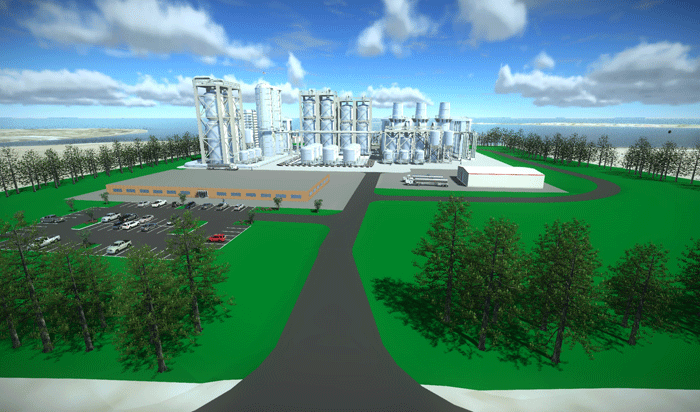
Research
One of the regular ‘must see’ events at YII is the Bentley Fellows, who give an update on their research over lunch. For the last two years there has been a definite slant towards Augmented Reality research and we are glad to say it was the same this year, perhaps even more so.
Stéphane Côté, Faraz Ravi, Zheng Wu and Mark Smith gave excellent updates on what is cooking in Bentley’s Applied R&D department.
Mark Smith demonstrated an Augmented Reality case where dimensions were ‘projected’ into the view of the engineer looking at a real world building façade. By simply using a positioned QR code on the wall, it was possible for dimensions from the model view to be visible to the engineer. The QR code had to be in the field of view for the computer to reference the geometry, so there was some Artificial Intelligence (AI), but it needed to be precisely placed on the wall to get accurate results.
Zheng Wu showed a video on remote sensing using motion magnification software algorithms. It may have looked like a normal video but when magnified could be used to determine the load and vibration on a motorway bridge. He compared the camera results against accelerometers attached to the bridge and found the modal frequencies measures were very similar.
Stéphane Côté is fascinated with the problem of getting accurate positioning in the real world for Augmented Reality (AR). When inside a structure GPS is no good. Last year he presented research into various ways to try and overcome this problem, using devices such as Apple iBeacons to triangulate internal spaces. This year he identified one solution as using a laser-enabled total station at a known location to reference. The key problem here, however, was line of site.
Mr Côté is also experimenting with drones. Having destroyed his first one in a fight with a tree, he had more success flying the second and produced some excellent models. He created an Acute3D model, then superimposed it over a MicroStation BIM model to compare planned building work to 4D data from the CAD system.
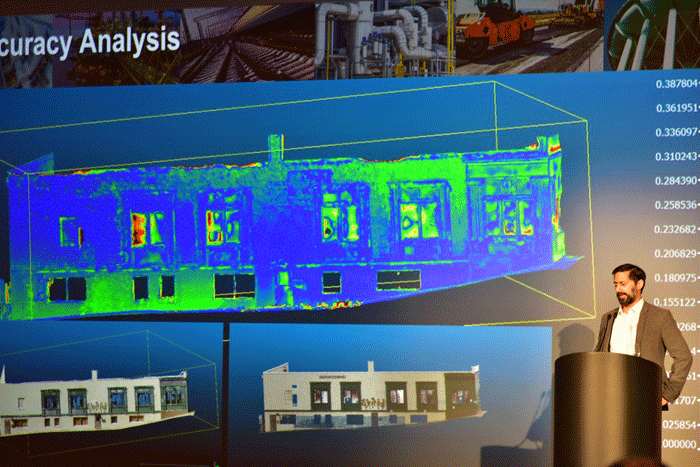
Faraz Ravi joined Bentley when his Pointools company was acquired. The technology is the point cloud engine beneath MicroStation. Having a deep understanding of laser scanning, he compared photogrammetry results against laser scanned images and found the photogrammetry results from image-based meshing to be very similar to that of a laser scanner.
Obviously there are caveats where terrestrial or LIDAR scanning have advantages but it would seem that photogrammetry with a high resolution camera, in daylight, gave more than good enough results, to mm accuracy.
Conclusion
This year’s YII was much more of a visual feast than we were expecting. With a concentration on conceptual design and Bentley putting two of this year’s acquisitions into ‘production’ so quickly, the company really managed to put out a compelling argument for its single platform strategy from concept to asset management.
With a new website and rationalisation of products Bentley is also becoming more transparent and it is much easier to see which product does what, and what makes up the various industry portfolios. This has needed to happen for a very long time and we wonder if the planned IPO gave it good reason to spring clean and de-clutter its shop front?
Acute3D and e-on software’s LumenRT are exceptionally impressive products and great additions to Bentley’s technology stack. They will transform the richness with which we can grab reality and communicate our ideas.
For a long time we have wondered why navigating huge, high quality rendered textured polygon models was possible in a £40 game but not in engineering software, which costs thousands.
Those days, it seems, are over because products like LumenRT really blow the doors off. Visualisation is not just about immersive real time but making it so easy that anyone can do it.
It is an exciting time to be involved in design and engineering software and, with applications like these, our industry looks set to become much more appealing to the next generation.
Making project data mobile
Bentley Navigator Connect Edition was first previewed in 2014 but it has only been commercially available since September 2015. Running on Windows, iOS, and Android (on mobile and desktop devices) it allows construction professionals on site and in the office to access, interact with and append all manner of project data.
The interface is optimised for touch gestures on tablet and smart phones as well as large touch screens, like the Microsoft Surface Hub, for team collaboration. As you would expect, Navigator has extensive 3D navigation capabilities but users can also search and filter model information, create visual reports, and check for clashes.
Virtually any type of data can be placed in the spatial context of the i-model. This could be Excel data, scheduling data, materials data or estimate data, for example.
The software is said to be particularly hot on issue resolution where everyone can collaborate on a list of issues associated with the project. Site workers can add notes, append photographs or screen grabs and this information is synchronised and shared with the rest of the team. There does not have to be a live network connection, edits can be made offline and synced when a connection is available.
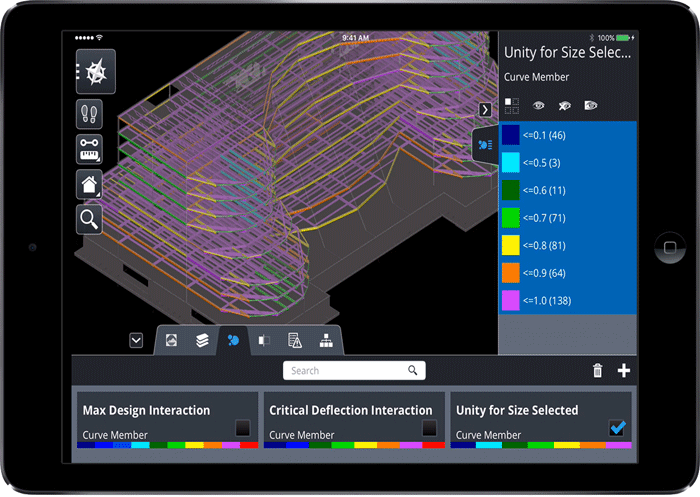
Bentley has now developed vertical versions of Bentley Navigator, putting domain-specific capabilities into the software. To date there are two versions: one for civils and one for structural. For civil design, the Bentley OpenRoads Navigator App will enable users to view, analyse, and enhance a wide variety of project information, including terrain, 3D models and 2D topographies.
For structural, Bentley’s Structural Navigator for iPad or iPhone allows users to view or interrogate structural models sent as i-models from any Integrated Structural Modelling (ISM) enabled application, including RAM, STAAD and ProStructures. The app replaces Structural Synchonizer View.
There are a whole host of structural-specific features, including visualisation enhancements, where models can be viewed in plan or by storeys, and a transparency mode where reinforcements and reactions of the analytical results can be exposed. Analytical results can also be attached directly to the model.
Raoul Karp, VP Structural and BrIM at Bentley Systems, told AEC Magazine that in the future users may also have access to some simple design tools directly inside the mobile application.
“If you are in the field and you want to make a change or the load changes, you will be able to do a quick little design in Structural Navigator,” he said.
Immersive real time visualisation made easy
In September 2015, Bentley acquired e-on software, a developer of applications for ‘simulation, and integration of natural 3D environments’, which more famously have been used in the making of blockbuster films such as Avatar, Terminator, The Hunger Games and The Avengers.
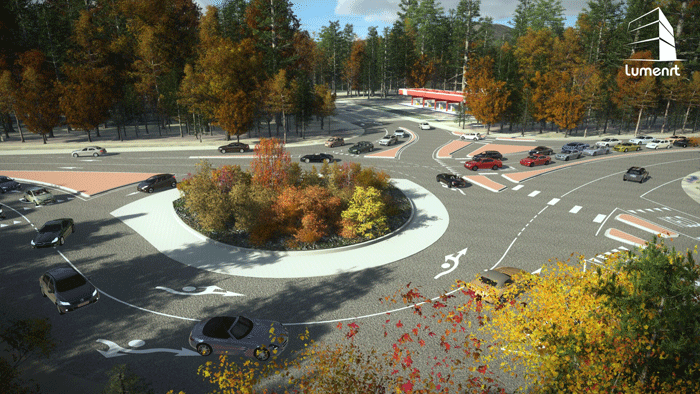
Beyond Hollywood, the company’s sweet spot is displayed in its real time rendering tool, LumenRT, which can be used to easily create amazingly detailed environments that feature trees, people, water and even wind.
LumenRT provides high-quality ‘movie production’ to architects and engineers, enabling the capture of existing conditions and providing context for proposed infrastructure designs. There are tight integrations for MicroStation, Autodesk Revit, ArchiCAD, SketchUp and ESRI CityEngine.
The ‘digital nature’ you can add is just insane. Depending on the time of year the fractal trees shed their leaves, as long as they are the right deciduous variety, of course.
The software really provides a great dynamic context for models and it is all rendered live with easy controls to adjust all the key variables, or place nature-elements, people or other agents / objects.
The really exiting thing about LumenRT is that you do not need to be a CG specialist to use it. It was designed for engineers, designers and architects and has a very simple user interface — there are only ten commands! Objects such as plants, shrubs and trees, are literally painted in, automatically sized to add variety and realism to your scene. It is incredibly easy to sketch out paths for vehicles and animated characters.
For ultra realistic real time vehicle simulation, it is even possible to integrate traffic data. The software has a direct interface to MicroStation Traffic and VISSIM.
It is also easy to share the immersive 3D experience with others. Simply package up the project as a ‘LiveCube’, and distribute the self-extracting executable to clients and colleagues.
The developers are working a new ‘streaming’ service called LumenRT Live that will allow stakeholders to view LiveCubes instantly on any device (tablets, smartphones, laptops) through a web browser. It uses Frame’s cloud platform.
LumenRT looks to be a hugely impressive addition to Bentley’s portfolio. The screen shots seen here really do not do it justice so we would recommend you check out some of the videos.
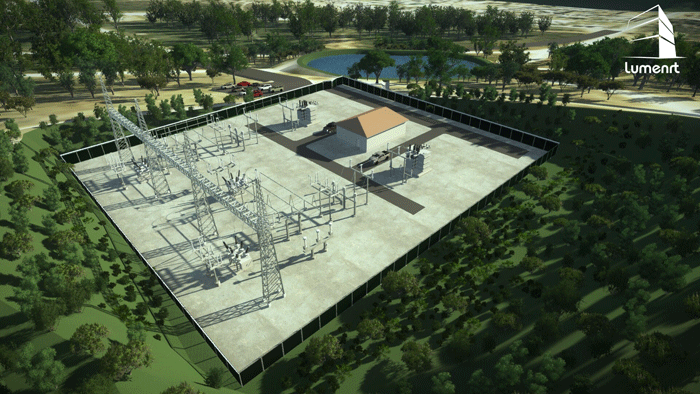
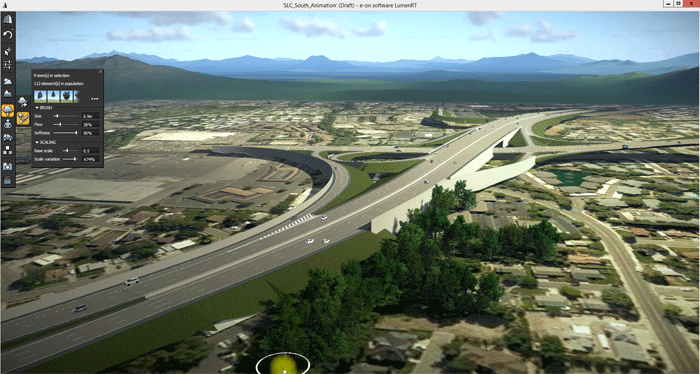
If you enjoyed this article, subscribe to AEC Magazine for FREE






